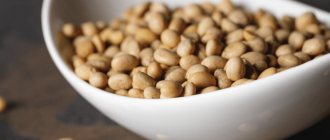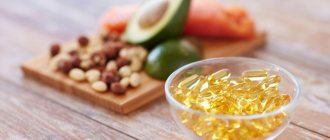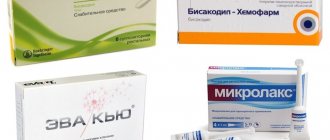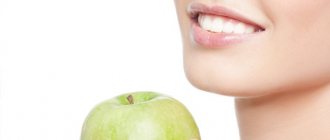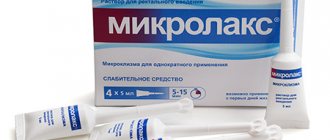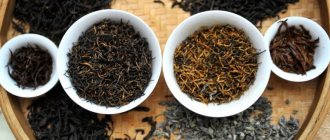Silicon can be found everywhere as it is present in most organic tissues. It is a naturally occurring chemical and should not be confused with silicone, which is a synthetic polymer.
Back in 1878, the famous chemist and microbiologist Louis Pasteur became interested in the healing properties of silicon and believed that it was an important substance in the treatment of many diseases.
In the 1970s and 1990s, UCLA studied the health benefits of silicon in mice and chickens. Long-term research has proven that silicon is necessary for proper growth and development, and silicon deficiency leads to deformation of the skeleton and joints.
Silicon was then added to the diet of racehorses to reduce injury in the animals. The study concluded that silicon reduces the number of injuries and stops the destruction of bones and cartilage.1
Biological role of silicon
Functions of silicon in the body:
• Participates in fat metabolism, regulation of fat deposition, limiting the accumulation of excess weight • Helps maintain normal levels of cholesterol in the blood • Improves the formation of collagen - the connective tissue framework of all internal organs and skin. This helps maintain organs in normal condition, improves the appearance of the skin, and prevents the premature formation of wrinkles. • Increases skeletal strength • Participates in maintaining the optimal structure of cartilage and ligaments • Prevents the development of atherosclerosis • Takes part in the mechanisms of regulating blood pressure, maintaining it at a stable level • Increases immunity, is important for the work of phagocytes and lymphocytes • Promotes more complete absorption of some other minerals.
Introduction
Silicon is the second most abundant element on the planet after oxygen. In addition, it is the third most abundant micronutrient in the human body. It is present in water, plants and animals. It is assumed that silicon is important for the skin, because. ensures optimal collagen synthesis, participates in the activation of hydroxylation enzymes, increases the strength and elasticity of the skin. It has been shown that physiological concentrations of orthosilicic acid stimulate fibroblasts to secrete type 1 collagen.
A higher silicon content in hair makes it resistant to hair loss and improves its texture. Silicon also affects the condition of nails, as it is the predominant mineral in their composition. The desire to achieve these beneficial effects is causing an increase in interest and scientific research examining the effectiveness and safety of dietary supplements containing silicon, which help increase serum levels of this element, which improves the condition of the skin and its appendages. There are various forms of silicon supplements, differing in terms of its safety and bioavailability. In some countries, these additives are already widely used, although the bioavailability of silicon varies widely - from 1% to 50%, depending on the chemical form.
However, it should be noted that there is still no consensus among researchers that silicon is an essential element for humans or the actual benefits obtained from the use of silicon-containing supplements. Therefore, critical evaluation of published information regarding the efficacy, safety, and bioavailability of silicon used in dietary supplements is essential. This was the purpose of this study.
Skin aging process
The aging process occurs through two main mechanisms: internal and external. The aging process is inevitable and leads to atrophy, a reduction in the number of fibroblasts and thinning of blood vessels. Collagen fibers are particularly affected in this process, which is the result of the accumulation of irreversible degenerative changes associated with aging.
Extrinsic aging is mainly the result of damage caused by ultraviolet radiation. Other factors associated with this type of aging include smoking, pollution and poor nutrition. This causes degradation of collagen and elastin. Additionally, in addition to a decrease in silicon and hyaluronic acid in connective tissue, a decrease in the amount of extracellular matrix proteins and a decrease in the number of fibroblasts have been described.
Collagen and the fibers it produces are responsible for the biomechanical properties of the skin, which allows it to act as an organ of protection against external injury. These fibers represent a major component of the structural integrity of connective tissue, present in large quantities in the skin, bones and joints. It has been noted that after 21 years of age, the skin of people begins to lose up to 1% of collagen annually, which leads to a decrease in its thickness, turgor and the appearance of wrinkles. Skin aging accelerates significantly after menopause, during which in the first 5 years there is a loss of about 30% of skin collagen and an annual loss of 0.55% of elastin.
Collagen biosynthesis after the third or fourth decade of life remains at a low level and is insufficient to replenish collagen lost during age-related degradation. The decline in collagen after menopause is particularly correlated with age-related declines in bone mineral density. Degradation of collagen fibers plays a major role in the aging process of the skin. Based on this, it is advisable to use mechanisms affecting collagen biosynthesis as a potential tool for improving and preventing skin aging.
Silicon is a ubiquitous trace element
Given the abundance of silicon in the human body, it seems unlikely that deficiency occurs in both men and women. In 1972, two studies by two different research groups showed that silicon is an essential element in chickens and mice. These experiments showed that a deficiency in silicon nutrients leads to skeletal deformation, incl. skull and long tubular bones, as well as damage to cartilaginous zones. Thus, the important role of silicon in bone mineralization was demonstrated.
Since then, several studies have shown that higher concentrations of this element in the blood had a beneficial effect on patients with osteoporosis, atherosclerosis, aging skin and brittle hair and nails, indicating the involvement of silicon in various mechanisms. However, there is no conclusive evidence to determine whether silicon is an essential nutrient for humans and higher animals, since its deficiency has not resulted in cell cycle arrest in mammals and its functional role remains unclear.
Most of the silicon present in the blood is excreted by the kidneys. This route of elimination is the main one, because Silicon levels in the blood correlate with levels in the urine. For this reason, the bioavailability of silicon and its derivatives is assessed in various studies by its concentration in serum or urine. In water, food products of plant, especially grain crops, and animal origin, silicon is found in high concentrations in the form of silicon oxide and silicate. The main sources of silicon in the diet of residents of the Western Hemisphere are cereals (30%), followed by fruits, drinks and foods of plant origin. Together, these products provide about 75% of all silicon consumed by humans. However, there are studies indicating low bioavailability of silicon from some foods due to the low solubility of some silicon-containing compounds, especially those that polymerize.
Thus, despite the presence of significant amounts of silicon in some foods, sometimes it is in them in insoluble form and cannot be absorbed from the gastrointestinal tract. Silicon present in food dissolves in the acidic environment of the stomach, transforming into orthosilicic acid or Si (OH), which is optimal for subsequent absorption. The literature describes the connection between the aging process and an increase in gastric pH, which leads to a decrease in the absorption of silicon contained in food products in a bioavailable form.
Orthosilicic acid is the main, most accessible form of silicon for humans, obtained from drinking water and other liquids, including beer. It is stable when diluted (<10 -4 M), but polymerizes at pH close to neutral. Absorption studies have shown that only orthosilicic acid is available, while its polymerized forms are not absorbed.
Questions regarding the bioavailability of silicon from mineral water are given in the literature. In a study of rats supplemented with orthosilicic acid in water, there were no significant differences in bone silicon concentrations relative to baseline. In beer, about 80% of the total silicon is contained in the form of orthosilicic acid. However, there is debate about the instability of orthosilicic acid in beer during industrial processes, for example, during bottling.
At high concentrations, orthosilicic acid must be stabilized to avoid excessive polymerization, which reduces its bioavailability. For this reason, attempts are being made to concentrate and stabilize orthosilicic acid in silicon supplements using various methods in order to increase its bioavailability.
Food additives containing silicon
There is a worldwide consumption of various types of silicon-containing supplements. As an example, in France the common organic silicon is usually monomethyl silanetriol (MmSt), while in Germany colloidal silicon is common and in Belgium choline-stabilized orthosilicic acid (CH-OSA) is more common. Monomethyl silanetriol (MmSt) is not only organic, but also monomeric and therefore more bioavailable, while other silicates show varying degrees of polymerization, which interfered with silicon uptake to varying degrees in rats and in some preliminary human studies.
Some studies have shown that monomethyl silanetriol is easily absorbed from the gastrointestinal tract after digestion without side effects. However, specific studies have not been conducted to evaluate its safety.
Jugdaohsingh et al, in 2013, conducted a study to evaluate the safety of the liquid organosilicon dietary supplement Monomethylsilanetriol (MMST) with the chemical formula CH3-Si-(OH)3, which has high bioavailability. A group of 22 menstruating healthy women received dietary supplement for 4 weeks at the maximum recommended dose of silicon 10.5 mg/day. The authors concluded that consumption of MMST is safe, being completely converted in the gastrointestinal tract after ingestion to orthosilicic acid, which is easily absorbed.
However, in response to the published article, Vanden Berghe questioned some aspects of the study, arguing that laboratory studies with toxicology testing in animals and longer durations in humans are needed to prove the supplement's safety. MMST has been used as a source of silicon for a long time around the world, especially in Europe. However, the European Food Safety Authority (EFSA) considers that there is not enough evidence to justify the use of MMST as a silicon additive.
The largest number of studies in the literature evaluate choline-stabilized orthosilicic acid (CH-OSA). CH-OSA has been approved for human consumption as the non-toxic and most bioavailable form of silicon. From a chemical point of view, CH-OSA is a mixture of orthosilicic acid and choline chloride. Given the lack of data on adverse reactions to silicon, a recommended dose has not been established. According to the US regulatory authority, choline, silicon oxides and various silicates are classified as substances "generally recognized as safe".
Choline stabilization is considered the most advanced technology for stabilizing orthosilicic acid. Choline has important characteristics that make it an ideal orthosilicic acid stabilizer .
In high concentrations, choline prevents extensive polymerization and aggregation of silicon particles and maintains it in the form of an aqueous suspension.
Additionally, as mentioned earlier, the presence of choline in the compound may have a synergistic effect with orthosilicic acid .
Choline is a precursor to phospholipids, which are important for the formation of cell membranes, and is also involved in cell signaling, lipid metabolism, and protection against homocysteine-mediated collagen breakdown.
Based on various studies conducted in animals and humans, the European Food Safety Authority (EFSA) has concluded that the silicon present in choline-stabilized orthosilicic acid is bioavailable and its use in supplements at the suggested doses does not pose a safety risk. provided that the maximum choline level is not exceeded (3.5 g/day). Studies have been conducted on both animals and humans. Supplementation with choline-stabilized orthosilicic acid in calves for 23 weeks increased serum silica levels by 4.9%.
Another study by Vanden Berghe assessed silicon bioavailability in 21 pigs that were supplemented with choline-stabilized orthosilicic acid during pregnancy (16 weeks) and lactation (four weeks). In the offspring of pigs receiving a silicon supplement, its concentration in the blood serum was 150% higher than in the offspring of the control group. The authors attribute this result to the bioavailability of silicon in the choline-stabilized orthosilicic acid supplement, as well as the ability of maternal transfer of absorbed silicon. Silicon absorption from a choline-stabilized orthosilicic acid supplement was assessed in a study of 14 healthy volunteers aged 22-34 years. Each volunteer received oral doses of various silicon supplements.
A significant increase in serum silicon concentration compared to baseline was observed with choline-stabilized orthosilicic acid supplementation. This study showed that the bioavailability of silicon is highly dependent on the chemical form of the compound.
Another study conducted to study the in vivo absorption of silicon from different sources by measuring its levels in blood and urine found varying levels of absorption. It was noted that a diet rich in silicon did not lead to a sufficient increase in the level of this element in urine and serum, compared with the period in which the subjects were on a normal diet. Based on this study, the authors concluded that silicon absorption is highly dependent on its chemical form and matrix.
Sripanyakorn et al measured silicon uptake from 8 different sources. The results confirmed that the degree of silicon polymerization is inversely proportional to intestinal absorption.
Silicon and its effect on skin, hair and nails
Regarding the skin, it is believed that silicon is important for optimal collagen synthesis and for the activation of hydroxylation of enzymes important in the formation of collagen fibers, increasing the strength and elasticity of the skin.
Silicon is also associated with the synthesis of glycosaminoglycans.
In terms of hair, it is assumed that hair with a higher silicon content tends to have less tendency to fall out and an improved texture. Nails also depend on the presence of silicon, since this element is one of the predominant minerals in their composition. The presence of soft and brittle nails may indicate a systemic silicon deficiency. Improving the quality of nails contributes to their resistance to infections.
A study of 50 healthy volunteers aged 40 to 65 years with clear clinical signs of facial photoaging assessed the effects on skin, hair and nails of supplementation containing choline-stabilized orthosilicic acid. The supplement was taken daily for 20 weeks, 2 capsules containing 10 mg of choline-stabilized orthosilicic acid .
Considering the serum concentrations of the various components, consumption of choline-stabilized orthosilicic acid at these doses was found to be safe. An improvement in the microrelief of the facial skin, its elasticity, and a decrease in the fragility of nails and hair were noted.
Another randomized study of 48 volunteers with thinning, hair loss-prone hair examined the effects of choline-stabilized orthosilicic acid on hair. In the group receiving 10 mg of choline-stabilized orthosilicic acid daily for 9 months, there was an improvement in the morphological and mechanical properties of hair, the hair became thicker, and its appearance improved, while no changes were found in the placebo group.
The fact that choline-stabilized orthosilicic acid increases hair resistance to breakage suggests that it may have a structural effect on hair fibers. According to the authors, interaction with keratin is possible, given that orthosilicic acid is a chemical form of silicon, common in physiological fluids and capable of forming complexes with amino acids and peptides.
Conclusion
An analysis of the scientific literature on the use of supplements containing silicon shows the great therapeutic potential of this element, which can improve human health and aesthetics. Analysis of research shows that among the various chemical forms available, orthosilicic acid is the form with high bioavailability. Other forms have absorption inversely proportional to their degree of polymerization.
Choline-stabilized orthosilicic acid (CH-OSA) as a silicon-containing dietary supplement is the most widely reported form in the literature, indicating greater scientific support for its use. However, there are few studies evaluating the safety, efficacy, and bioavailability of other chemical forms of silicon that use proper design, large numbers of volunteers, and long follow-up periods.
Signs of excess silicon
Excess silicon is a serious disorder, because excess mineral is deposited in organs and is not removed, since silicon (this was already mentioned above) is chemically inert. An excess of the element occurs in people who come into contact with silicon compounds in hazardous industries, as well as in residents of areas with unfavorable ecology.
When you inhale air filled with particles of silicon compounds, these particles accumulate in the lungs - a disease called silicosis develops. The patient develops a cough and is prone to pneumonia and persistent respiratory tract infections. The lung tissue gradually becomes denser. Serious breathing disorders develop.
If substances containing silicon are ingested, urolithiasis may develop.
Healing water
Many believe that prayers and spells can structure water and make it healing. In fact, the silicon content in the liquid is of great importance. Within a few minutes, the element releases a special substance into the water, which turns it into healing water.
Silicon disinfects and purifies liquid, giving it a key taste. It should be drunk cool and should not be boiled. Water is suitable for people with any diseases, as the element helps strengthen the immune system and cope with various pathologies.
You can prepare a medicinal drink at home. It is better to purchase silicon for the recipe in special stores. You should not pick it up in forest clearings or river valleys; it may be contaminated with chemicals. Sometimes there are rocks mixed with other elements.
It is preferable to buy a small black or gray stone. It is washed under running water and placed at the bottom of a glass jar. For every 10 g of silicon, you need to pour 1 liter of water into a container. The jar is left in a dark place for three days. During this time it must not be touched or moved. The liquid is then poured into another vessel, and the stones can be washed and used again.
In healing water, the structure of molecules changes. That is why it can have a beneficial effect on the body. You need to take this liquid for some problems:
- kidney dysfunction;
- anemia;
- colds;
- skin inflammations;
- hypertension.
It is useful for pregnant women to drink healing water, as their body wears out - hair begins to fall out, nails peel, teeth crumble. It is better not to give it to infants, but you can wipe the skin with the liquid to prevent inflammation from forming on it. It is also useful for impaired functioning of the digestive system, blockage of blood vessels, otitis media, and loss of strength.
A lack or excess of silicon will lead to an imbalance of all substances in the body. This can lead to serious health problems. There will be difficulties with the digestive, circulatory, nervous and excretory systems, and appearance. The element also affects the emotional background. A lack of silicon leads to stress and nervous breakdowns, depression and loss of strength.
Silicon - benefit or harm to the body? Why is Silicon important for the body?
Silicon: price and sale
As a rule, the intake of this mineral into the body is somewhat less than the need for it, so in many cases the use of silicon in the composition of preparations is required. In our store you can find a large number of high-quality mineral supplements containing silicon. We present drugs of various price categories, produced by domestic and foreign companies.
To buy a silicon-containing complex, simply add the drug you like to your cart or call our managers. The product will be delivered to you in a short time, and you will be able to pay for your purchase in the most convenient way.
Also on our website you can get a free consultation with a nutritionist on taking dietary supplements and vitamins.
There is a toll-free number for regions
8 800 550-52-96.
What effects can be observed from the use of colloidal silicon SILICA
Everyone who starts taking silicon notices good growth of nails and hair, and improved skin condition. From the most bioavailable drug SILICA, many people observe such an effect after the first course (one bottle, designed for about a month and a half of use). Women are especially pleased with such a quick and noticeable effect.
During the period of colds, many people who take silicon solutions claim that they get sick less often and feel better.
As an adjuvant, SILICA colloidal silicon works well during the recovery period after injuries, fractures, and in the treatment of cardiovascular diseases.
Our body is an extremely complex interconnected system, so it is difficult to guess what exactly the effect of taking silicon will be in each specific case. Especially in the long term. Perhaps, by using the drug from a young age, you will be protected from osteoporosis or heart attack in the future. One thing is certain – the effect will definitely be positive. Try it and see for yourself.
Beneficial features
Silicon is as important for a woman’s body as calcium. Many people believe that calcium is the most beneficial mineral for bone health, but silica is actually more important.
| Organs affected by silicon | The influence of the mineral |
| Gastrointestinal organs | Restores and strengthens the muscles and tissues of the gastrointestinal tract after they have been damaged due to age, poor nutrition, and microflora disorders by intestinal parasites. |
| The immune system | Silica may play an important role in the immune system and its biological response to harmful stimuli, as it is essential for the process of producing antibodies (antigens) and promotes the conversion of LB (B lymphocytes) to LT (T lymphocytes). Silica reduces swelling due to its positive effects on the lymphatic system. |
| Leather | Collagen makes up up to 75% of the weight of the dermis and is responsible for the firmness and elasticity of the skin. Collagen, which mainly consists of silicon dioxide, as well as elastin, mucopolysaccharides and mucous carbohydrates, help retain moisture and prevent premature aging. All of these molecules contain large amounts of silica. Research shows that without sufficient amounts of the beneficial mineral, the body cannot maintain optimal skin elasticity, strong hair, nails, teeth and gums. As part of collagen, silica can speed up the healing of burns, wounds and scar tissue. |
| Brain | Silicon levels decline with age, so older people may need more. Scientists and researchers have hypothesized that Alzheimer's disease is linked to the accumulation of aluminum in the brain, and a link has now been established between aluminum in drinking water sources and Alzheimer's disease. Silicon dioxide reduces aluminum accumulation. Thus, silica supports neurological health. |
Its safety and wide range of uses make silica one of the most important minerals used in complementary therapies and alternative medicine. Regular use of nutritional supplements can significantly improve your quality of life in later years.
Silicon is useful for women, but its deficiency can lead to the development of certain disorders of the body:
- decreased femoral bone density;
- reducing the concentration of silicone in bone tissue and the rate of its formation;
- deterioration of skin microrelief and hair structure.
What foods does it contain?
To fill your body with enough silicon, you need to know exactly which foods contain silicon. Below is a table of food products containing this chemical element.
| The product's name | Kinds |
| Cereals | Oatmeal, corn, brown rice, millet, barley and wheat bran. A two-hundred-gram serving of porridge contains approximately the daily requirement of the element. |
| Animal oils | Butter, lard, margarine, as well as pork, lamb and beef fat. |
| Vegetable oil | Made from soy, cedar, flax, sesame, pumpkin, olives, mustard, almonds and peanuts. |
| Seafood and meat products | Seaweed, seaweed, beef, chicken. |
| Vegetables | Soybeans, cabbage (white cabbage only), tomatoes, onions, green beans, peppers, celery, beans, carrots, beets, rhubarb, cucumber, radishes, spinach and potatoes. |
| Dairy products | Kefir, sour milk. |
| Fish products | Chinook salmon, flounder and halibut. |
| Fresh berries and fruits | Plum, apricot, strawberry, banana, apple, cherry. |
| Natural juice | Squeezed from cranberries, grapes and pears. A two-hundred-gram glass of juice contains approximately twenty-four percent silicon. |
| Dried fruits | Dried grapes, dates and figs. |
| Nut kernels | Pistachios, sunflower seeds, walnuts, hazelnuts. The greatest amount of silicon is found in hazelnuts and walnuts. The least amount is found in pistachios. |
Now you know what you need to eat to get silicon into your body. The highest amounts of silicon are found in foods such as buckwheat (120 mg), soybeans (170 mg), barley (600 mg), millet (754 mg), oatmeal (1000 mg) and brown rice (1240 mg). The amount of the element was indicated per hundred grams of product.
As you can see, there are a great many sources of silicon for the body. Therefore, in order to fill the body with the missing amount of the substance, consume the foods indicated above - and you will be healthy.
